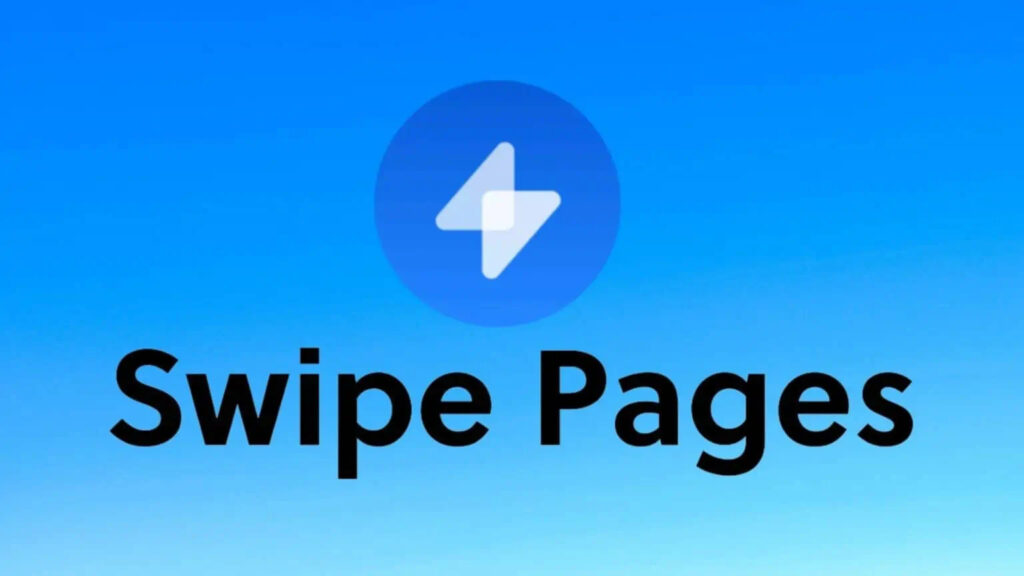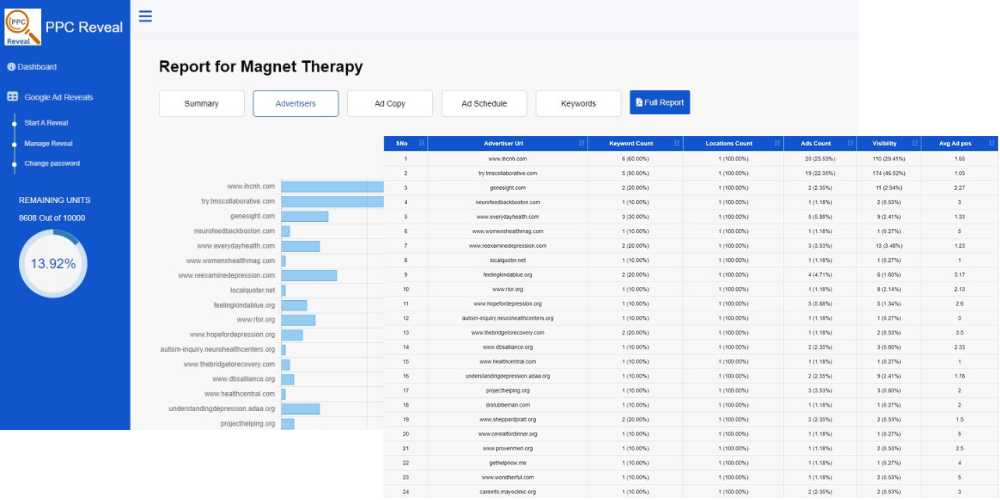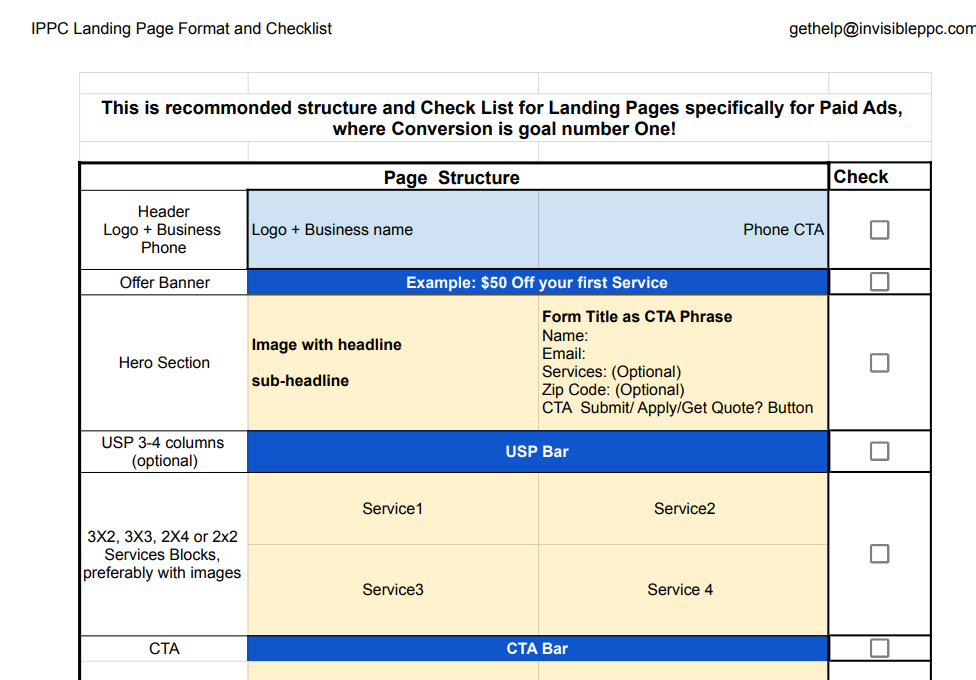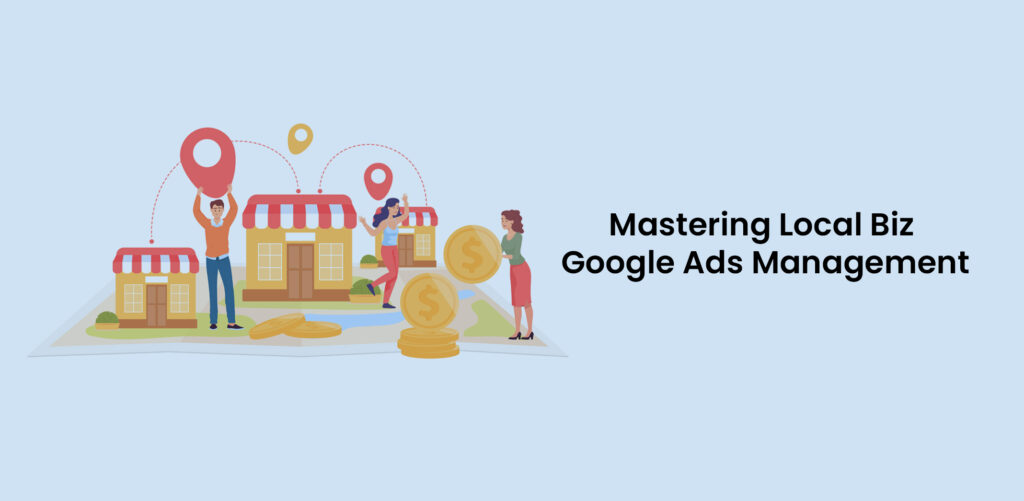Welcome to the world of mastering Google Ads Management for local businesses, where we unlock the full potential of your Google Ads campaigns.
Google Ads are crucial for local businesses to reach their target audience effectively. However, managing these ads requires a strategic approach and continuous optimization. This is where we come in with over 12+ years of industry experience and a comprehensive guide to equip you with the tools and strategies needed to drive meaningful results for your business.
We will discuss the best practices, tips, and strategies for mastering Google Ads for local service businesses. We will cover everything you need to know to address competition, assess your ad, and fine-tune it.
But why do we need so much effort for a Google Ad?

Well, 60-80% of the time Google just tells you to spend more. While it might be hard to believe – Google is not your friend for small businesses – it is for large profit-making businesses. But this is where Google ad management aims to improve performance without overpaying for the ads.
Let’s get you started with the holy grail of mastering local biz Google Ads Management.
Understanding the Tech Stack: Unleashing the Full Potential of Google Ads
Google Ads Console, Ads Keywords Planner, Automation Scripts for Tracking, Tag Manager, and Looker Studio for reporting – these are the pillars of Google Ads Management.
But the success of Google Ads doesn’t stop there. And to explore this success you need to leverage a set of additional resources that will not only polish your ad management but also take it to an entirely another level.
Harness the capabilities of Swipe Pages to craft compelling landing pages that drive conversions. Take a step ahead and conduct rigorous A/B testing to optimize the pages for maximum impact. And to monitor which elements of the landing pages are working and which ones need improvement, you can rely on heatmaps to track user behavior, giving us invaluable insights into how our audience interacts with our content.

Call tracking is also an important aspect of Google ads management.
Every call is an opportunity, and you must seize it. With a good call tracking system
in place, you can respond promptly, record conversations for future reference, and assess the effectiveness of your communication. Security is crucial in the digital age, and that’s why we advocate for the implementation of fraud protection measures. Clickcease is a powerful tool that safeguards your campaigns against fraudulent activity, ensuring your budget is spent wisely.
But here’s the secret sauce – competitive ad tools. PPCreveal.ai is a game-changer, providing you with unparalleled insights into your competitors’ strategies. With this tool, you can analyze their performance, dissect their ad copies, and even peek into their landing pages. This isn’t just about keeping tabs on the competition – it’s about gaining a competitive edge and refining your own strategy.
And here’s the cherry on top – when you partner with InvisiblePPC, you gain free access to PPCreveal.ai. But even if you’re not ready to take the plunge into white-label services.

Frequency - The Rhythm of Google Ads Management
Frequency is key for managing your campaigns to ensure peak performance and maximum impact. Google Ads account should be given daily attention. While the number of daily activities may not be extensive, they are crucial for maintaining account health and addressing any immediate issues. On a daily basis, you must conduct checks for policy violations or limitations, review the account change history, monitor last-day conversions, analyze converting terms, assess CPA, and respond to any client notes or requests.
But it doesn’t stop there. On a weekly basis, ramp up your efforts with comprehensive optimizations. Review performance against targets, evaluate budget pacing, scrutinize call and form fill conversions for spam, analyze search queries, fine-tune bids, strategies, and keywords, and implement select recommendations based on our optimization score. Additionally, provide weekly status updates to your clients, ensuring transparency and keeping them informed about the metrics, changes made, total spend, impressions, clicks, conversions, and more.
By maintaining a steady rhythm of daily checks and weekly optimizations, create a robust Google Ads Management framework that ensures our campaigns are always on track and performing at their best. As a white-label agency provider, we’ve honed our approach and report formats to perfection, receiving positive feedback from our clients. These tried-and-tested methods not only deliver results but also instill confidence and trust in the clients, knowing that their campaigns are in capable hands.
Landing Page Testing - Elevating Conversion Rates with Precision
The science of landing page testing is a critical component in driving conversion rates skyward. Whether your campaign is experiencing a low conversion rate or it’s time for quarterly optimization, landing page testing deserves its own dedicated mechanism and attention.
You need to follow a meticulous Google Ads Management
process to ensure your landing pages are finely tuned for maximum impact. First and foremost, you need to conduct a thorough review of the landing page using heatmaps, analyzing bounce rates, and assessing loading speeds. This data provides invaluable insights into user behavior and highlights areas for improvement.
Next, you must engage in a dialogue with your clients to discuss potential changes and tests for the landing page. You need to collaborate closely with the design team to create a new LP variant that aligns with your goals and objectives.
Now, the testing begins. Implement tracking for the new variant, seek agency approval, and activate the variant at a 50% weight for a split test. This approach allows you to compare the performance of the new variant against the original, ensuring that any changes you make are backed by data and deliver tangible results. The conversion rates typically exceed 40% with this approach, and one out of every two landing pages becomes a high-performing converter. This level of success is only achievable through ongoing testing and optimization. If you’re seeing double-digit conversion rates, it’s time to roll up your sleeves and get to work.

In InvisiblePPC with 12+ years of data, we have curated a checklist that can be used to streamline your process.
You can download from our agency resources by clicking here
Monthly Reporting, Quarterly Optimization, and the 6-Month Optimization Roadmap - A Strategic Approach to Long-Term Success
The critical components of our reporting and optimization cadence is focusing on monthly, quarterly, and 6-month milestones. These checkpoints are essential for ensuring our campaigns remain on track, adapting to changing market dynamics, and delivering sustained success for our clients.
Every month, you must send out detailed reports to the clients, highlighting key metrics and discussing the Google Ads Management
strategies implemented during that period. Engage in a mandatory monthly sync-up meeting with your clients, ensuring consistent communication and alignment of goals.
The quarterly optimizations are where the big changes happen. Delve into seasonality, analyze competition and performance data for the last 90 days, and conduct a thorough review of ad copies. Identify winners, pause non-performing ad copies, and implement new ones with labels for tracking purposes. After 90 days, review the performance of these new ad copies, ensuring that you are always optimizing for success.
And then, comes the 6-month optimization roadmap. This is a pivotal moment, almost like setting the stage for a new campaign. With more data at your disposal, reconsider demographics, review audience segments, and explore potential expansion opportunities. Conduct a comprehensive competition review, re-evaluate our conversion tracking setup, and assess the readiness for omni-channel retargeting. Once you reach a minimum of 1,000 clicks, you are ready to embark on the next phase of the journey.
A Detailed 78-point Google Ads Management Checklist

At InvisiblePPC, we understand the complexity of managing Google Ads accounts effectively. That’s why we’ve curated a comprehensive checklist with our years of business expertise and Google Ads management experience.
Whether you’re a seasoned advertiser or just starting out, keeping a checklist provides a clear roadmap for optimizing your Google Ads campaigns. From account setup and keyword research to ad copywriting and budget management, each step must be carefully crafted to help you achieve your advertising goals.
Know Your Targets for Lead Generation and Sales)
Understanding the targets for lead generation and sales is crucial for optimizing your ad performance and driving meaningful results.
Let’s have a look at these key metrics for Google Ads Management –
CPA (Cost Per Acquisition)
CPA, or Cost Per Acquisition, is a fundamental metric that measures the cost of acquiring a lead or customer. For lead ads, this is typically defined by form fills. It’s essential to monitor your CPA closely, as it directly impacts your return on investment (ROI). By optimizing your campaigns to achieve a lower CPA, you can increase the efficiency and effectiveness of your ad spend.
CPC (Cost Per Click)
CPC, or Cost Per Click, is another crucial indicator that provides insights into the performance of your ads. It represents the cost you pay each time a user clicks on your ad. While CPC is an intermediary metric, it’s still important to monitor, as it can impact your overall ad budget and ROI. By optimizing for a lower CPC, you can stretch your budget further and drive more clicks for the same investment.
Ad Budget
Your ad budget is the total amount you allocate for advertising within a specific timeframe, typically a month. It’s essential to set a realistic and data-driven budget that aligns with your goals and objectives. Your ad budget should take into account your CPA and CPC targets, ensuring that you have enough funds to achieve your desired results. By closely monitoring your ad budget and adjusting as needed, you can optimize your spending and maximize your ROI.
By closely monitoring your CPA, CPC, and Google Ads Management budget, you can make data-driven decisions that will help you achieve your goals and objectives.
The first thing you need to make sure is that your ad type matches your marketing. If you are doing lead ads or search ads, all those should match. It is important to see that the settings are in place and that the setup is proper. The systemic approach begins with the question of whether the CPA is within target – the CPA does become the final metric about what’s happening with your Google Ad. If the CPA is $50 and you are getting $40, you must talk to the client and increase the budget.
Now comes the question – If your cost per click is too high, how do you optimize your landing page for your Cost Per Click to get better? If the audience does not like the ad, they will not engage with it, because it is all about a click, you need to remember that the first thing the user will see will be the ad as it is the promise to the user that you have something for them. If the ad appeals to the user that is when they click and reach your landing page.
If your cost per click is too high, try to fix it by optimizing your ad copies and check whether your keywords target the right people. Unless you are a big brand like Nike or Gucci, people do not care about the name. They are more interested in the service you offer. If the user is looking for a metal roofing service and sees your ad mentioning Metal Roofing Experts with 30 years of business, they will click on your ad. Instead, if you say Bob’s Roofing Company, people might engage less with it because the service is not highlighted.
If the CPC is not on target, the conversion rate will be low; in that case, you need to optimize your landing page. For optimizing a landing page, you need to remember that you type the keyword that the user is looking for in the first half of your landing page. For effective Google Ads Management
, you need to look at the overall funnel and reiterate the keyword that highlights the service you are offering.
In a recent scenario, one of our clients faced a challenge with their Google Ads performance. Both the Cost Per Acquisition (CPA) and Cost Per Click (CPC) were significantly high, which affected their overall return on investment. The target CPA was $270, but the actual cost per conversion was nearly $600, accompanied by a CPC of $69.39.
The high CPC led to a lower number of clicks, which reduced the chances of optimizing the landing page effectively. To address this, we focused on lowering the CPC by optimizing ad copies and refining the targeting strategy. This Google Ads Management
approach helped improve the conversion rate from 18.2% to 10%, resulting in a more favorable $20 possible conversion.
Additionally, the low Click-Through Rate (CTR) indicated that the ads were not resonating with the audience. By revising the ad copies to better highlight the service and ensuring that keywords were specific to the client’s offerings, we aimed to increase CTR and subsequently the conversion rate.
For clients with low budgets, we recommend starting with a higher budget initially to allow for sufficient data collection and optimization. This approach can help them achieve better results in a competitive market.
Managing Google ads for local businesses requires a 360 approach and a stronghold of the market trends and optimization basics. All these factors together might appear overwhelming but that is where we come in to save the day!
At InvisiblePPC
, we offer white-label services for Google Ads Management
to
help businesses optimize their Google Ads performance and achieve their marketing goals. Whether you’re struggling with high CPA, low CPC, or low CTR, our team can provide tailored solutions to improve your ad campaigns.
Contact us today
to learn more about our services and how we can help you succeed in the Google advertising landscape.

